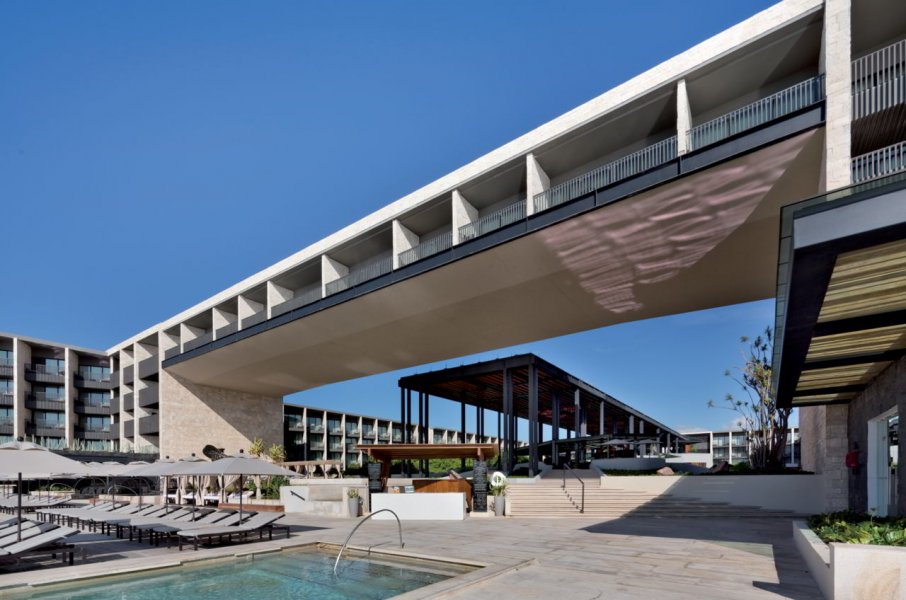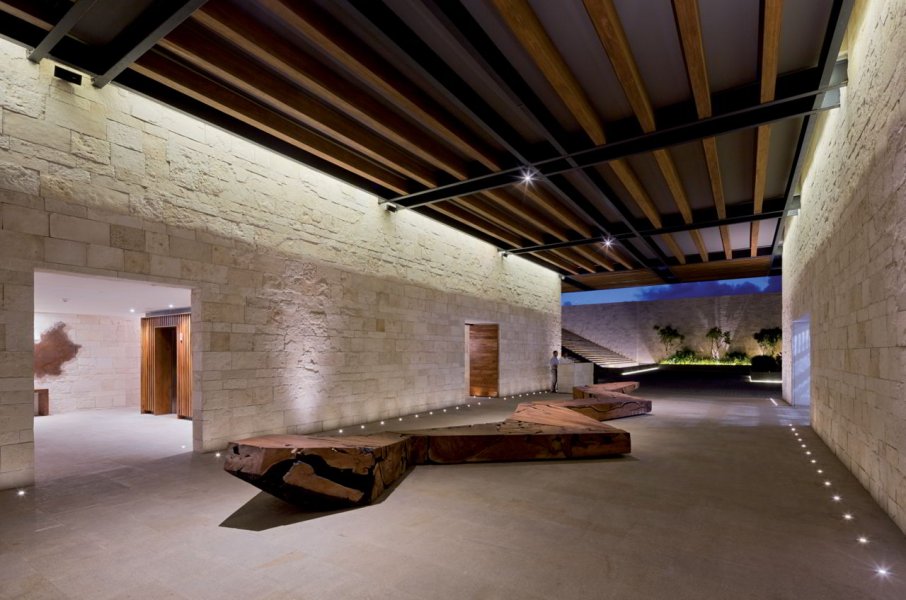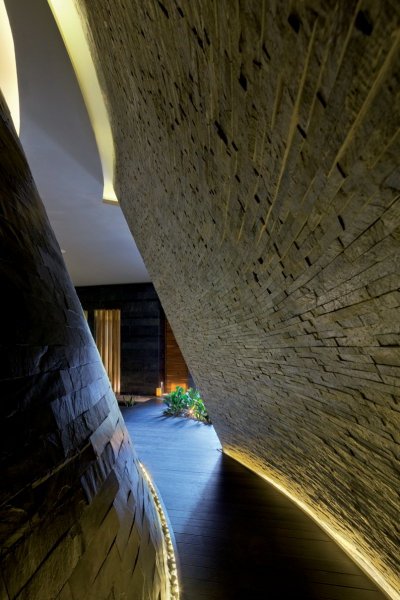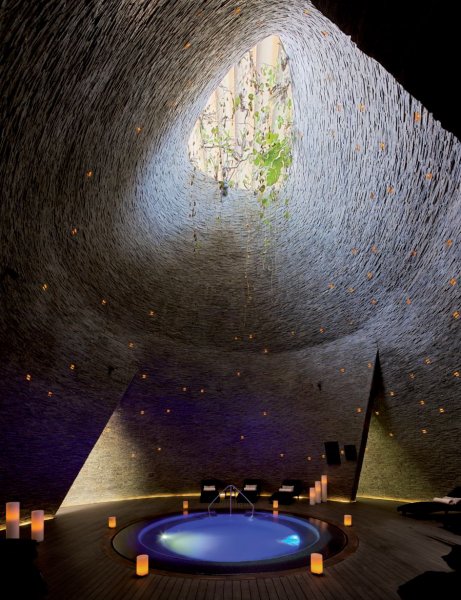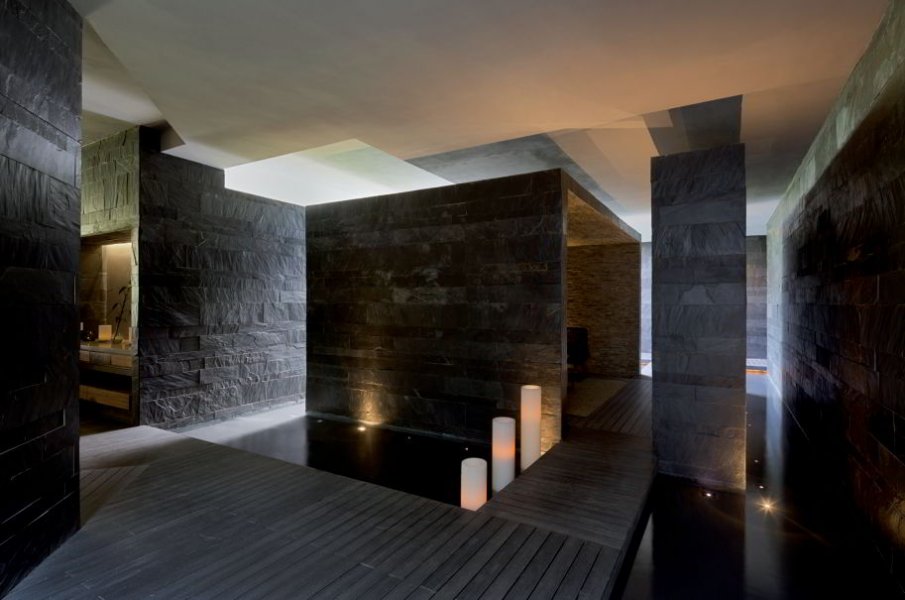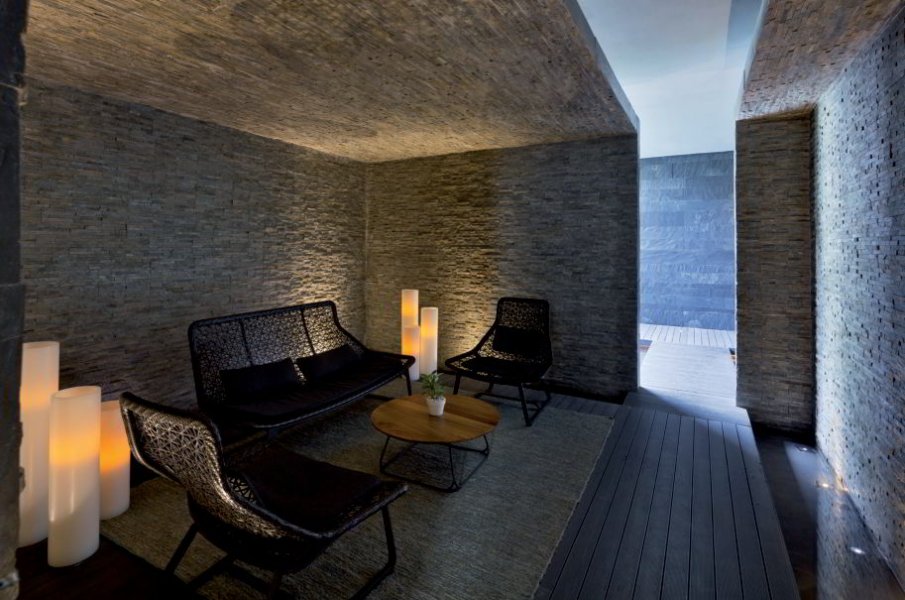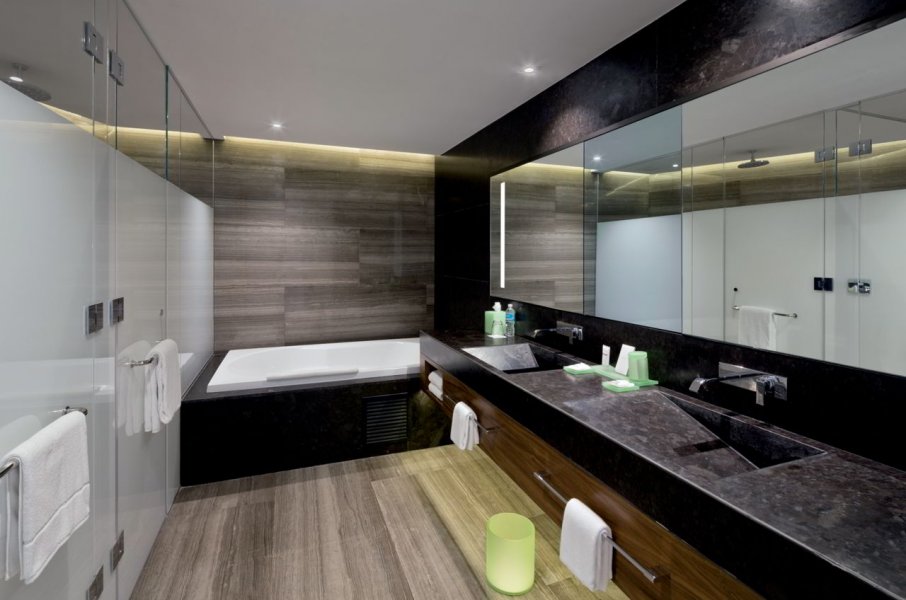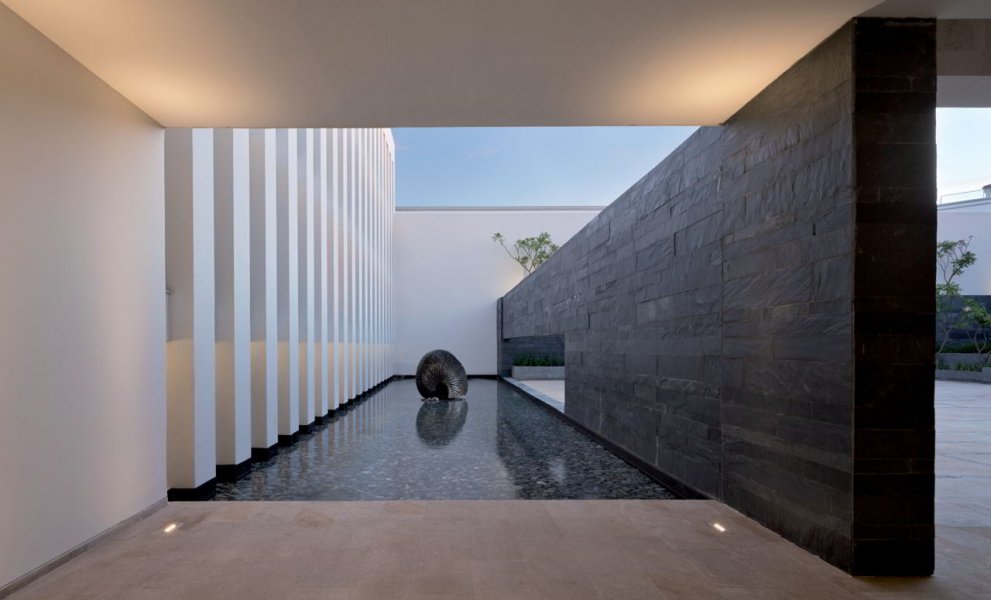The Grand Hyatt Playa del Carmen, which was opened just over a year ago, is part of the effort to develop the region. The hotel site incorporates a protected mangrove area and is in close proximity to what is referred to by locals as Fifth Avenue, a vibrant tourist destination featuring restaurants, bars, shops and malls of different shapes and sizes plus a lively nightlife. The resort therefore combines the local environment and culture in a modern setting on a site that slopes down to the sea with a 140-metre beachfront.
The architects carried out a series of site analysis studies to define land use and ensure adequate protection of the natural area. This led to the development of an architectural programme that divided the site into three sections, each of which is inspired by the organic shapes of the Yucatan Peninsula and designed with a different intention to generate a wide range of sensations, routes and experiences for guests and visitors.
The first section forms the connection between Fifth Avenue and the hotel, with the back of house areas located beneath the indoor "street". The second section, rectangular in shape, is located at the centre of the site
and surrounded by a four-storey block of hotel rooms, which look out onto the mangrove gardens that were preserved to create this central space. Above the gardens and in the centre of the second section there is an open covered pedestrian walkway referred to as "el paseo". This provides a stepped transition from the entrance to the ocean and features sculptural design, such as seating and service kiosks that appear to have been carved out of one large rock eroded by sand and sea. The space beneath the paseo houses meeting rooms and the spa.
The primary visual element in the spa is a large curved, conical, stone-clad volume rising from the earth. Its design alludes to the magnificent cenote pools, which are deep natural pits unique to this part of Mexico. The top of the cone is open, allowing beams of sunlight to penetrate the wellness area below, an expansive, peaceful space for guests to relax in.
The third section is closest to the sea and forms the heart of the hotel, combining entertainment amenities and restaurants with direct access to the beach. The rooms and suites in the four-story building enjoy excellent views of the pools, the terraces and the sea.
The selection of materials and finishes was based on the architects’ intention to align with the natural surroundings: sand-coloured cladding, stone, the extensive use of natural wood, native vegetation, bodies of water, and warm indirect lighting. The largest and most significant spaces in the hotel complex were purpose-designed to showcase artworks specifically created for this project by artist César López-Negrete.
The most important light for life on this planet is daylight. The Grand Hyatt resort in Playa del Carmen thrives on daylight, so to speak. Not only the outdoor spaces designed for sport and relaxation, but the penetration and use of daylight in the hotel design: generously sized openings in the circulation zones, the provision of balconies and large windows in the hotel rooms and suites, the inclusion of shading measures, and the careful blend with sometimes dramatic shadow to underscore the architectural design.
As darkness falls, electric light takes over: graze lighting brings out the texture of the materials applied, shapes circulation routes, and makes for a warm balance to the dark blue fading daylight. Light is applied with care, often integrated into the architecture and fortunately avoiding scores of downlights, which generally only go to underline how unnatural electric light is.
The wellness area has received especially discreet treatment with light. People using the spa area can enjoy the intimate feel of the space and appreciate the candlelike glow and gentle daylight-quality. At the same time, the pit cenote look-alike space has a certain thrill to it. Original cenotes, which are especially associated with the Yucatàn peninsula, refer to any location with accessible groundwater, and sacred cenotes are known to have been used by the ancient Maya for sacrificial offerings. They were sometimes simply used as a source of water, and were thus a great relief. Cenote water is often very clear, since it comes from rain water filtering slowly through the ground. The pool in the Grand Hyatt spa is very small compared with some natural cenote pools. The light applied to the inner surface of the conical volume underscores the quality of the stone surface and lends the overall space authenticity and meaning.
To return to the guest accommodation: it remains a mystery why hotel bathrooms tend not to have windows and are frequently illuminated with inappropriate colour temperatures from inappropriately positioned fixtures. In this sense, Grand Hyatt Playa del Carmen is no exception.
But if you have never see a Mexican sunset – it is about time you did.
Project team:
Architecture: Sordo Madaleno Arquitectos
Interior design: Sordo Madaleno Arquitectos + Rockwell Group Lighting consultant: Luz y Forma
Landscape consultant: Gabayet Paisajistas
